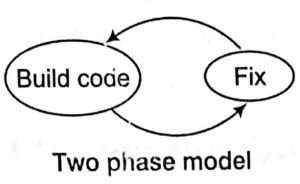Software Development Life Cycle Tutorial for Beginners with Examples
Software Development Life Cycle Tutorial for Beginners with Examples:The Complete Guide of Computer Science and Information Technology to Crack any Examination:-In this cyberpoint9 tutorial we are going to describe about the concept of Any Competitive Examination in Computer Science and Information Technology and cyber programming. And also we will describe that how can we crack any Competitive Examination Like GATE-CS ,UGC-NET,BARC,VSSC, DRDO, ISRO, NASA, BHEL,SPACEX,GOOGLE,FACEBOOK, etc .This is the free Full Complete Guide for Computer Science and Information Technology Students and Achievers Scientist.In this tutorials: course for Beginners to Advance And why we use Handbook of CS AND IT to make more interactive and save our time for our Daily life. Best Online Tutorial for Computer Science and It students .When ever we want to learn any thing the things become more earlier is somebody/tutorial/study material taught us through Examples. Here we have tried to describe each and every concept of Programming and Cyber Security in the light of cyberpoint9.com best Hindi Short tutorial using simple and best possible example. These examples are so simple that even a beginner who had never even heard about hacking and Cyber law can easily learn and understand How the isro and barc drdo for computer science books works in our today’s Technical Field. This is the best tutorial/Study Material very beneficial for beginners as well as Professional.The Complete Guide of Computer Science and Information Technology.
Software Development Life Cycle (SDLC)
A software life cycle is often called as a software development life cycle and it is a particular abstraction that represents a software life cycle. The period of time that starts when a software product is conceived and ends when the product is no longer available for use.
The software development life cycle typically includes following phases
- Requirement phase
- Design phase
- Implementation phase
- Test phase
- installation and check out phase
- Operation and maintenance phase
Build and Fix Model

Sometimes a product is constructed without specification. Basically, this is an adhoc approach and not well defined. It is a simple two phase model. The first phase is to write code and the next phase is to fix it. Fixing in this context may be error correction or addition of further functionality.
Waterfall Model
The waterfall model is a sequential software development model in which development is seen as following steadily downwards like a waterfall through several phases. This model maintains that one should move to next phase only when its preceding phase is complete and perfect.
Phases of development in the waterfall model are thus discrete and Uri., no jumping back and forth or overlapping between them,

Problems of Waterfall Model
- It is difficult to define all requirements at the beginning of a project.
- This model is not suitable for accommodation any change.
- A working version of the system is not seen until late in the project’s li:e. thus delaying the discovery of serious errors.
Prototype Model
Here, we first develop a working prototype of the software instead c’ developing the actual software.
Advantages of Prototyping Model
- Users are actively involved in the development.
- It provides better system to users, as users have natural tendency to change their mind in specifying requirements.
- Since, in this methodology, a working model of the system is provided to the users so that they can get a better understanding of the system being developed.
- Errors can be detected much earlier as the system is made side by side.
- Quick user feedback is available leading to better solution.
-

Handbook of cs and it
Disadvantages of Prototyping Model
- Practically, this methodology may increase the complexity of the system as scope of the system may expand beyond original plans.
- This model leads to implementing and then repairing way of building system,
Iterative Enhancement Life Cycle Model
This model counters the limitation of the waterfall model and combines the benefits of both prototyping and the waterfall models. The basic idea is that the software should be developed in increments, where each increment adds some functional capability to the system until the full system is implemented. At each step extensions and design modifications can be made.
An advantage of this approach is that it can result in. better testing, since each testing each increment is likely to be easier than testing entire system like in the waterfall model.

Spiral Model
This is the recent model that has been proposed by Barry Boehm. The spiral model has many cycles. The radial dimension represents the cumulative cost incurred in accomplishing the steps done so far and the angular dimension represents the progress made in completing each cycle of spiral. The spiral model is divided into a number of framework activities, also called task regions.
Typically, there are between three to six task regions as shown in figure.

Customer Communication: Task required to establish – effective communication between developer and customer.
Planning: Task required to define resources, timeliness and other project related information.
Risk Analysis: Task required to access both technical and management risks.
Engineering: Task required to build one or more representations of the application.
construction and Release: Task required to construct, test, install and provide user support (e.g., documentation and training).
Customer Evaluation: Task required to obtain customer feedback based on evaluation of the software representations created during the engineering stage and implemented during the installation stage.
Sorting in Design and Analysis of Algorithm Study Notes with Example
Learn Sorting in Handbook Series: Click here
Follow Us on Social Platforms to get Updated : twiter, facebook, Google Plus
